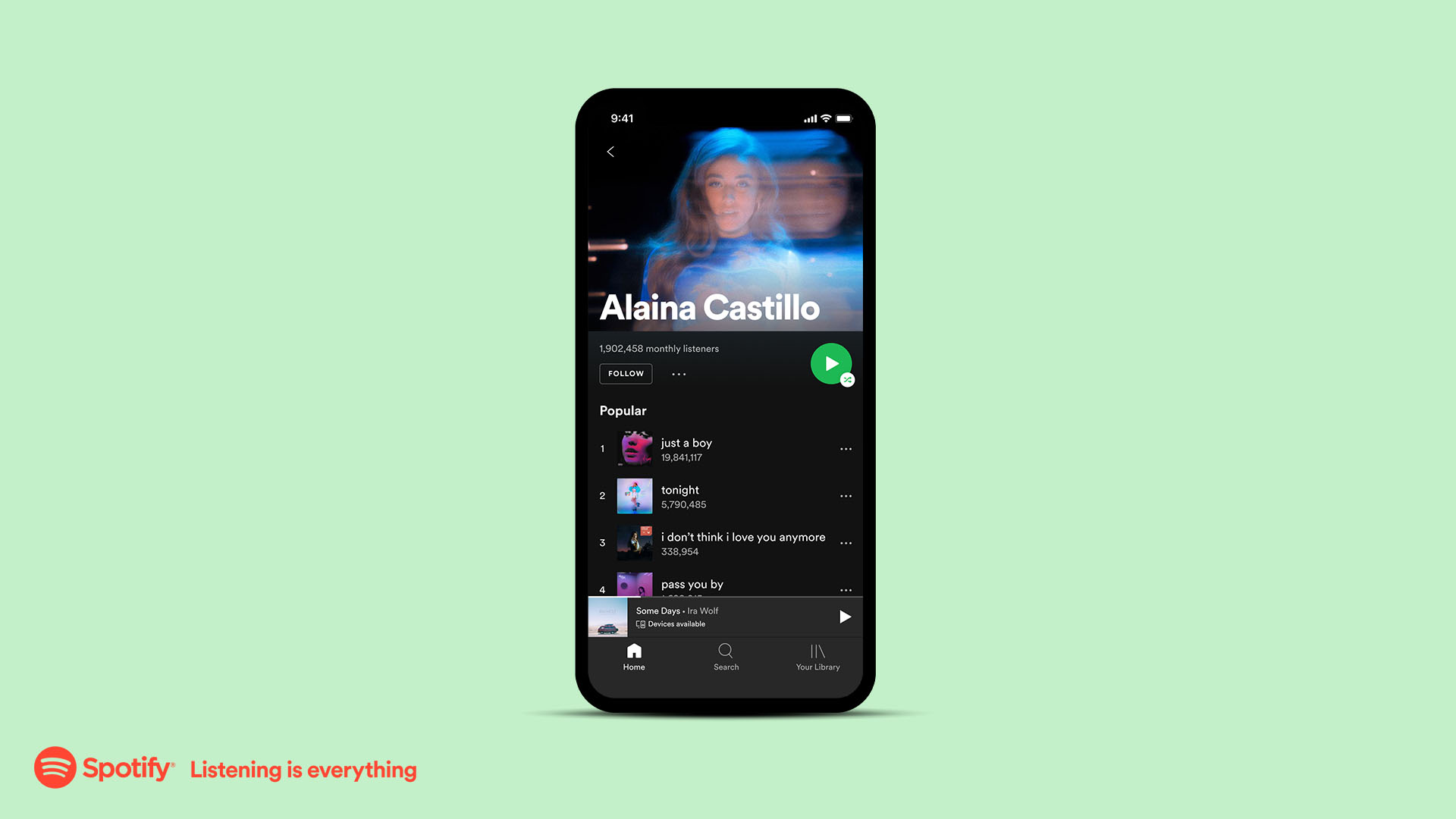Nearly a year after it was announced, where is Spotify HiFi?
Where's our lossless audio Spotify?

According to Spotify itself, high-quality music streaming is time and again the most requested feature users want to see - yet in 2022 we’re still stuck with the same standard definition playback we’ve had for years.
It wasn’t meant to be this way though - almost a year ago in February 2021, the company unveiled Spotify HiFi, a new benefit for Premium subscribers to upgrade their sound to a lossless format that sounds as good as a CD.
The announcement was hyped up by Billie Eilish and FINNEAS who were brought on to explain why audiophiles should opt for high-quality audio - and it came with a promise that select markets would be able to try the feature “later this year.”
As the months flew by Spotify remained tight-lipped about when ‘later’ would arrive - and it turns out that it never would. That’s not to say Spotify HiFi has been canned, but we’re now done with 2021 and so far it has yet to materialize.
So where is Spotify HiFi?
Why should you care about Spotify HiFi?
Spotify HiFi - like other streaming services - will be a huge deal for audiophiles looking to get the best performance out of their sound system or headphones.
The best speakers and headphones can help you detect minor details in songs, from the subtle ways that a guitar’s strings are plucked to inflections in a backing singer’s performance. But to relay this information your speakers need to actually receive it in the first place.
Sign up for breaking news, reviews, opinion, top tech deals, and more.
If you’re playing music from a low-quality stream the slower speeds they operate under will cause some of these finer details to be lost. They’re cut for space in order to push through the most prominent aspects of what’s playing.
Lossless audio uses higher speeds and more data-filled streams in order to prevent these details from being left behind, with none of the audio lost in transmission i.e. it’s lossless.
The highest quality MP3 track has a bitrate of 320kbps (this is the bitrate Spotify uses currently), CDs are transferred at 1,411kbps and a 24-bit/192kHz file is transferred at a rate of 9,216kbps - the latter being the level considered hi-res audio.
In the case of Spotify HiFi we’ve been told that it will be at CD-quality, and a previous leak showed music playing at 16-bit/44.1kHz quality. Your quality will still depend on the quality of your tech, but HiFi should help you get more out of cheaper headphones and speakers too.
Why is Spotify HiFi delayed?
Spotify hasn’t issued any statements addressing the delay at the time of writing, so it’s not 100% clear why Spotify HiFi has yet been released.
That said, we do have several ideas for why it appears to be caught in development hell.
For starters, we suspect Spotify may still be unsure if it should charge extra for the service.
It wouldn’t be the first to do so, Tidal and Deezer users must pay more for HiFi. However, Amazon Music Unlimited and Apple Music now include lossless streaming options without any added cost.
Both of these services cost $9.99 / £9.99 / AU$11.99 - the same as Spotify Premium - and Spotify could run the risk of losing subscribers to its competitors if it goes above the price they’ve set.

Spotify hasn’t expressly said that it plans to charge more, but if it was certain prices wouldn’t be raised to accommodate Spotify HiFi we expect it would have proudly declared that during the announcement. Instead, it opted to reveal that information at a different time.
In addition to price, we wouldn’t be surprised if the Covid-19 pandemic and restrictions in many parts of the world have impacted the development of Spotify HiFi. We’ve seen the same happen across the tech industry as the shift to working from home has had a toll on productivity as workflows adjust to the new normal.
If Spotify has faced its own fair share of problems then a delay to Spotify HiFi makes perfect sense.
Plus, if HiFi is still in development we can’t imagine that Spotify’s current Joe Rogan problem is helping the situation much either.
Spotify bought the exclusive rights to host the audio version of Rogan’s podcast (The Joe Rogan Experience) in 2020. The show was - and continues to be - one of the most popular podcasts in the world, but the show and its guests have faced a continuous conveyor belt of controversy - with Spotify now in the firing line too because of its association.
Most recently, singer Neil Young successfully requested that his music be removed from Spotify to protest Rogan’s show spreading Covid-19 and vaccine misinformation.
The move - which some suspect could inspire other artists to follow suit - caused Spotify to lose more than $2 billion in market value. The situation has started to improve again with Spotify now adding warnings against potentially harmful content.
Yet we suspect that Spotify’s main priority right now is ensuring it actually has content to stream - regardless of its audio quality.
When can we expect Spotify HiFi to launch?
That’s the question we all want to know the answer to, and disappointingly we aren’t too sure when the release date will arrive.

Leaks and accidental rollouts last year seemed to suggest that the service was nearing launch - a reader even sent us photos of Spotify HiFi in action on their device.
Yet right now we’re stuck with measly 320kbps streaming rather than the 16-bit/44.1kHz quality leaks suggest will come with HiFi.
Hopefully, a release date announcement is imminent but the ball is in Spotify’s court - at this point, we’d happily take a minor status update just to know that the service is still in the works.
We have reached out to Spotify to find out more, if a representative gets back to us we'll be sure to update this piece with their response.
- Check out: the best music streaming services in 2022

Hamish is a Senior Staff Writer for TechRadar and you’ll see his name appearing on articles across nearly every topic on the site from smart home deals to speaker reviews to graphics card news and everything in between. He uses his broad range of knowledge to help explain the latest gadgets and if they’re a must-buy or a fad fueled by hype. Though his specialty is writing about everything going on in the world of virtual reality and augmented reality.